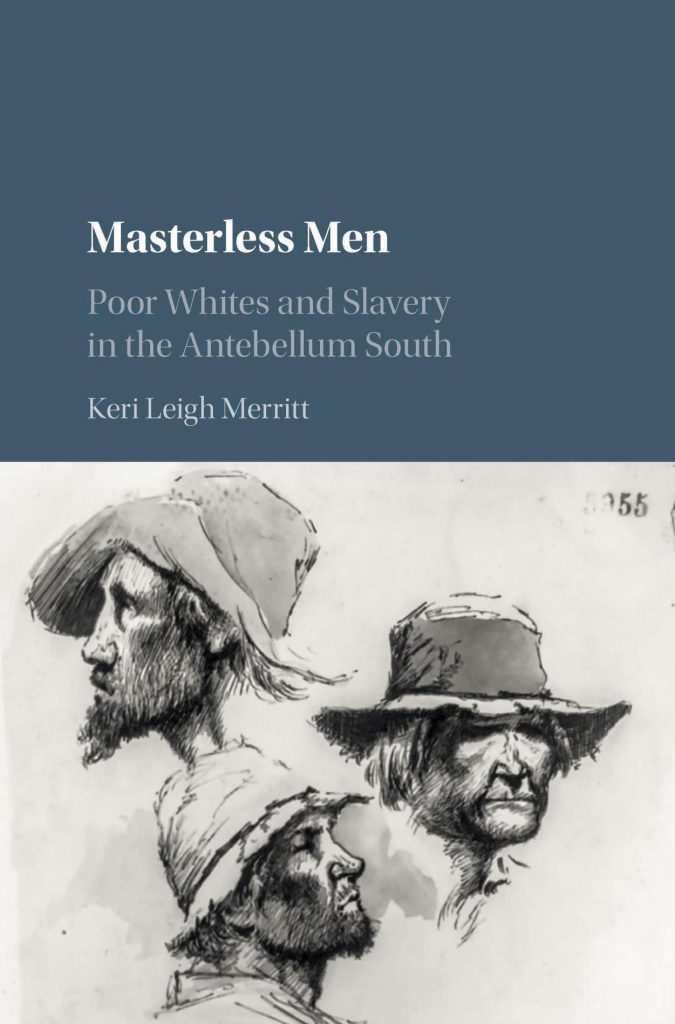Race, Economics, and the Persistence of Slavery
*This post is part of our roundtable on Keri Leigh Merritt’s Masterless Men.

Since Eric Williams’s classic study Slavery and Capitalism (1944), historians have been exploring connections between slavery, race, and economic policy. Williams was the first to establish the centrality of the transatlantic slave trade in European economic development. Newer additions by Edward Baptist, Abigail Swingen, and Sven Beckert have continued to analyze the role that slavery played in shaping modern Atlantic economies. The appetite for slave labor in support of cash crops that included sugar, rice, indigo, and cotton produced an intractable tie between economics and a racialized system of forced labor. Southern plantation society was among the more visible aspects thereof.
As Keri Leigh Merritt and other historians remind us, these antebellum plantations co-existed with the farms of poor whites, and the wealth embodied by these plantations also stood in stark contrast with landless whites. Contrary to past myths that would have us believe these poor whites saw themselves as the proverbial “temporarily embarrassed millionaires,” Merritt argues in Masterless Men: Poor Whites and Slavery in the Antebellum South, that these poor, landless whites understood well that they would never have the financial means to own slaves; particularly at any level that would ever compete with plantations (7). And not only could impoverished whites never hope to compete with slave labor, Merritt illustrates that increased demand for slave labor in the 1840s and 1850s actually reduced demand for poor-white labor. While whites did not share the crushing dehumanizing experiences of chattel slavery, a highly-profitable, southern agricultural economy that was utterly dependent upon the enslavement of Blacks had negative socio-economic repercussions for poor whites.
Since these poor whites knew that slave labor represented an unfair economic advantage, it would seem logical that they might oppose slavery on the grounds of economic self-interest, if not for moral reasons. It was something that southern planters understood; resentful poor-white farmers, who came to envy and oppose slavery, posed a risk to the institution itself. And so, Merritt argues that southern planters co-mingled the language of race and class in such a way as to discourage anti-slavery sentiments among white yeoman farmers. More specifically they wanted to discourage southern, working-class whites from aligning themselves with abolitionists from the North. Ties to community mattered. For instance, the landowning elite tended to view itinerant hawkers or peddlers as a security risk—an “intolerable nuisance,” “irresponsible—having no interest in any locality,” or even likely to “tamper with, and corrupt the slave” (87).

Merritt demonstrates how the planter class pitted poor-white farmers against the slaves—in essence, they engaged in race-baiting. Much as the legal, economic, and social policies of the Atlantic world were driven by a desire to support the propagation of slavery, Southern planters conceived of legal and economic strategies designed to stir resentment among a population of white people who appeared as obvious allies for slaves against their masters. And as “masterless men,” these impoverished white men were in many ways more dangerous than the specter of rebellious slaves, since they did not have the same oppressive restrictions on their freedom or mobility.
Mobility was weaponized in the literal sense, in some cases. But it is the promise of socio-economic mobility that proved a far more effective weapon for stirring racial resentment and tying economic opportunity to whiteness. White workers did resist mistreatment against the “master class,” and at times employed the ultimate threat to “withdraw their support for slavery” (89). As the wealth gap increased, slave owners had, on one hand, a deep desire to expand the highly-profitable plantation system. On the other hand, they wanted fewer poor whites around, who might “undermine the racial hierarchy” (91). The Irish immigrants who began arriving in the mid-1840s proved to be keen on the prospects of upper mobility. In particular the planters noticed that since the Irish immigrants were frequently oppressed, they “tended to be oppressive, whenever they got the chance” (94). In squeezing poor workers and sticking them in hazardous jobs for low pay, the planters pitted the Irish workers (of whom they were openly contemptuous) against enslaved laborers (96). Slaveholders recognized that it was a risky game, wherein they risked these workers coming to resent slavery and becoming “hot abolitionists” (96). Nonetheless, they could dangle the potential (if an elusive one) of improved wages over the heads of white (immigrant) workers.
By dangling the prospect of socio-economic advancement and tying it to whiteness, slaveholders effectively weaponized socio-economic advancement as an effective means to stir both race and class resentments. It was a form of economic whiteness that continued to segregate white labor opportunities from Black ones, even after the end of slavery. Some of the earliest Reconstruction-era labor unions, such as the National Labor Union, prioritized the rights of white workers, giving halting and ineffective defenses of Black labor rights. Following the Civil War, the movement of newly-freed African-American sharecroppers from the South into cities in the North led to resentment and labor tensions between them and poor white immigrants, resulting in deadly race riots in the first decades of the twentieth century. As long as the energies of the poor were focused toward slaves, and later poor Blacks, this reduced the energy that could be spent on upsetting racial hierarchies.
Copyright © AAIHS. May not be reprinted without permission.